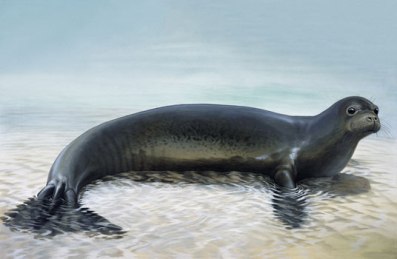PERUVIAN WOOLLY MONKEY
(Lagothrix cana)
Endangered
 MAJOR THREATS
MAJOR THREATS
This species is heavily hunted and infants are much favoured as pets. The females with offspring tend to be targeted by hunters, so that they can sell the infants as pets. Hunting is the main threat prior to deforestation, and colonization severely reduces their numbers. Heavy deforestation also occurs in many parts of this species’ range.
FUN FACT
Can move at speeds of up to 35mph.
HUMBOLDT PENGUIN
(Spheniscus humboldti)
Vulnerable
 MAJOR THREATS
MAJOR THREATS
Fisheries in Peru exploit the main prey of the penguins, greatly reducing their prey base.
Alien species such as rats predate on the eggs of the penguins and also on young chicks. There have also been reports of feral cats on the islands in Peru which can cause a predation risks to both adult and juvenile individuals.
Andean foxes can enter coastal reserves in Peru and prey on the adult and juvenile penguins.
Humboldt Penguins are extremely sensitive to human presence which reduces the success of breeding at frequently visited sites.
These penguins are also at risk from habitat loss and pollution.
FUN FACT
Humboldt penguins were named for the German scientist, Alexander Von Humboldt, who explored Cuba, Mexico, and South America in 1799.
SCARLET MACAW
(Ara macao)
Least Concern

MAJOR THREATS
There are currently no major threats to the Scarlet Macaw but their population trend is currently decreasing. It is predicted that the population of Scarlet Macaws will drop by around 25% in the next 3 generations.
FUN FACT
They are said to have the intelligence of a 4-8 year old child.
AMAZON RIVER DOLPHIN (BOTO)
(Inia geoffrensis)
Data Deficient
 MAJOR THREATS
MAJOR THREATS
Accidental death in fishing gear such as in gill nets.
Deliberate killing for fish bait.
Fishing with explosives although illegal in most places is still common in areas of the Amazon.
Damming of rivers.
Between 1956 and the early 1970s, more than 100 botos were live-captured and exported mostly to the USA, Europe and Japan
FUN FACT
These dolphins are PINK!
Click here for more Animal Travels.
Sources:
Images courtesy of:
 Its time to look backwards at the animals of the past that couldn’t quite survive into our present. This week we will be looking into the Caribbean Monk Seal (Neomonachus tropcicalis) and what ultimately led to its extinction.
Its time to look backwards at the animals of the past that couldn’t quite survive into our present. This week we will be looking into the Caribbean Monk Seal (Neomonachus tropcicalis) and what ultimately led to its extinction. They could be found in the water around rocky or sandy coastline and islands which they used for resting and breeding. Their diet is unknown but was believed to be eels, lobsters, octopus and reef fish.
They could be found in the water around rocky or sandy coastline and islands which they used for resting and breeding. Their diet is unknown but was believed to be eels, lobsters, octopus and reef fish.
 The Beech Marten is listed as Least Concern by the
The Beech Marten is listed as Least Concern by the  This species is also luckily listed as Least Concern by the
This species is also luckily listed as Least Concern by the  Listed as Least Concern by the
Listed as Least Concern by the  These little rodents are listed as Least Concern (YAY FOR FRANCE!!) by the
These little rodents are listed as Least Concern (YAY FOR FRANCE!!) by the